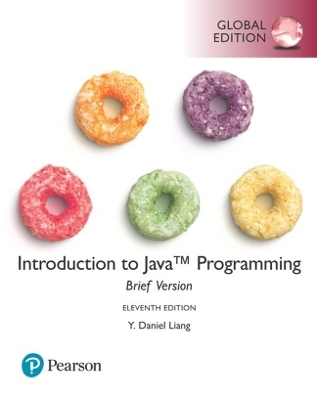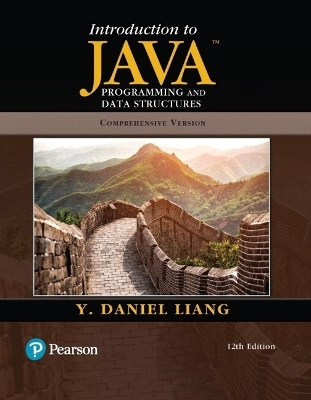
Advanced Java Networking (Bk/CD)
Prentice Hall
978-0-13-749136-0 (ISBN)
- Titel erscheint in neuer Auflage
- Artikel merken
74913-5 Why Java is the language for building Internet and networked applications. Advanced Java Networking is the up-to-the-minute, insider's guide to Java's fast-growing set of networking alternatives. Sun Microsystems Software Engineer Prashant Sridharan shows how Java has been designed to optimize networked applications, covering architectural elements such as multithreading, serialization, and I/O. Then, step by step, he demonstrates how to create networked Java applications for client/server computing on the Internet, using each Java networking API. Compare the architectural and syntactical decisions associated with each alternative, as you learn how to: *Create quick, easy client/server applications with Java Remote Method Invocation (RMI). *Use Java Interface Definition Language IDL to create CORBA applications that communicate with legacy systems. *Use JDBC to build Java front ends that access corporate databases via SQL. Advanced Java Networking provides new insight into the next generation of Java networking tools, including both Sun and third-party technologies. Discover how you can: *Use Java Web Server servlets to create dynamic Web content.*
Use Java Beans to build applications with plug-and-play software modules. *Use the Java Management API to create objects that can be centrally managed. *Use JavaOS, Java microprocessors and inexpensive network computers to distribute Java applications everywhere, at extraordinarily low cost. On the CD-ROM, you'll find all sample code and the complete JDK 1.1. Advanced Java Networking' is an essential resource for all Java software developers and engineers-and for every manager considering Java for networked applications.
Introduction. Thanks a Million! How to Read this Book. What This Book is all About. Who Should Read This Book. How to Read This Book. Where to Begin. Conventions. Fixes and Updates. 1. Advanced Java. Basic Java. Object-Oriented Design Using Java. Applying Good Object-Oriented Design Skills. OOPQStrong, Efficient, and Effective. Java I/O Routines. Streams. The Java Core System. The Abstract Window Toolkit. I/O in Short. Introduction to Threading in Java. What are Threads? Threading in Java. Thread Summary. Object Serialization. Handling Object Relationships. The Output Streams. Handling Object Webs. Reading Objects. Security and Fingerprinting. Serialization Overview. Performance. Performance Issues. Summary of Performance Issues. A First Look at Java Networking in Action. Pulling it all Together. Summary. 2. Java Sockets. Sockets and Inter-Process Communication. Introduction to IPC. Summary of Sockets. Protocols. The OSI Stack. TCP/IP. HTTP. IIOP. Protocols and Sockets. It All Ends with Protocols. TCP/IP Client. Developing Clients for Servers. TCP Server. Server Methodology. Setting Up the Server. Initializing the Server Socket. Creating the Thread. Detecting Information and Starting the Thread. Gathering Information. Clients and Servers in Short. UDP Client. Datagrams. Creating a UDP Sender. Featured Application. Messaging Format. Client. Server. Summary. 3. Java IDL: Interface Definition Language. CORBA. CORBA-Style Communication. The CORBA Vision. Communication with CORBA. The Interface Definition Language. Different Vendors, Different ORBs. Advantages of CORBA. Common Object Services. Object Administration. Clients, Servers, Oh My! What CORBA Means For You. The Interface Definition Language. Interfaces. Modules. Interface Inheritance. Variables and Structures. Methods. Constructed Data Types. Exceptions. Overview of the IDL. Language Mappings. What Exactly Are Language Mappings? The Sun Microsystems Java Language Mapping. Interfaces, Modules, and Methods. Interface Inheritance. Variables and Structures. Constructed Data Types. Exceptions. Java and CORBA Together. CORBA Clients. Designing a User Interface. Defining the Problem. The Cooler Interface Definition. The Cooler User Interface. Initializing the Client ORB. Client Overview. CORBA Servers. Defining An Interface and Generating Code. Server Overview. Java Callbacks. Creating a Callback. Registering a Callback. Receiving and Handling a Callback. A Java IDL Version of the Featured App. Server Interface. Network Module. Calendar Server. Summary. 4. Java RMI: Remote Method Invocation. Distributed Objects. What is RMI? How Does RMI Work? Local vs. Remote Objects. Applet vs. Application. Dynamic Method Invocations. Overview of RMI. Client. RMI Client Methodology. Catching Exceptions. Handling Security Constraints. Client Overview. Server. RMI Server Classes. RMI Registry Classes. RMI Server Security Constraints. Generating Stubs and Skeletons. Server Overview. RMI Dynamic Server Creation. The Factory Solution. Dynamic Server Overview. Callbacks. Why Callbacks? Creating the Callback. Implementing the Callback Client. Filling in the Callback Method. Registering Callbacks. Invoking Callbacks. Callbacks in Short. A Java RMI Version of the Featured App. RMI Interface. RMI Client. RMI Server. Summary. 5. Java Database Connectivity. Inside JDBC. Database Drivers. JDBC in General. Databases and SQL. Creating an Access Database. Simple SQL. Summary. Retrieving Information. Creating the User Interface. Database Security. Using the JDBC Driver. Creating Queries. Database and SQL Overview. Storing Information. Creating the Connection. Forming a Statement. A JDBC Version of the Featured App. Creating the Database. Mapping the Network Module to Database Queries. Developing the Client. Establishing the Connection. Making an SQL Invocation. Invoking SQL to Make a Change. Shutting Down the Connection. Summary. 6. The Java Web Server. Inside an HTTP Server. Web Server Architecture. Using a Web Server. Advanced Web Server Features. HTTP Server Overview. Servlets. What is a Servlet? Servlets Overview. Dynamic Documents. Creating the Servlet. Dynamic Documents Overview. Multi-Purpose Servers. Client Invocations. Server Architecture. Summary. 7. Java Beans. Component Models. The Competition. Overview of Beans Component Model. Interface Publishing. Event Handling. Persistence. Layout. Builder Support. Distributed Beans. Why Use Beans? Java Beans. Component Interaction. Network Communication. User Interface Issues. Persistence. Events. Properties. Beans in a Nutshell. Using Java Beans. Creating a Java Beans Application. A Simple Example. Instantiating Components. Connecting Beans Events. Bean Introspection. Summary. ActiveX. What is ActiveX? The Microsoft 'vision'. ActiveX Controls. ActiveX and Java. Summary. OpenDoc and CyberDog. OpenDoc Components. Cyberdog. Summary. 8. The Networked Java World. Marimba. How Does It Work? Castanet vs. Java IDL and Java RMI. Why Castanet? Active Software. How ActiveWeb Works. ActiveWeb and Java. ActiveWeb vs. IDL and RMI. Netscape. What is Netscape ONE? Netscape ONE and Java. ICE-T. How Does It Work? ICE-T and Java. Summary. 9. JMAPI: Java Management API. What is Network Management? Network Management At a Glance. Simple Network Management Protocol. The Unique Management Problems of Java. Network Administration Overview. Modifying Clients for JMAPI. AVM Base Classes. AVM Help Classes. Managed Object Interfaces. Setting Up Notifications. Modifying Servers for JMAPI. Summary. 10. Java Hardware. JavaOS. Why JavaOS? High-Level JavaOS System Architecture. JavaOS Virtual Machine. Drivers and Networking. Uniqueness of JavaOS. JavaStation. Introduction to the JavaStation. Writing Networked Applications for JavaStation. The Java Revolution Makes It to Your Desktop. Java Chips. The Java Chip Family. The PicoJava Architecture. Why Java Chips? Summary. 11. Java and Security. Safety in Java. Java Class Security. Encryption. Authentication. Governments and Security. The 'Clipper' Controversy. Summary. 12. Making an Architectural Decision. Java Sockets. Flexibility. Simplicity. Java IDL. Advantages of JavaIDL. Disadvantages of JavaIDL. JavaIDL Implementations. JavaIDL is Robust. JavaIDL is Difficult. Java IDL is Powerful. Java RMI Decisions. RMI Advantages. RMI Disadvantages. Three-Tier Applications in RMI. JDBC. Why JDBC is Not Enough. JDBC and JavaIDL or JavaRMI. JDBC Alone. Other Java Technologies. When to Use Beans. When to Use Servlets. Summary. Appendix A. Appendix B. Glossary. CD-ROM Installation. Contents. Software Installation. JDK 1.02 to JDK 1.1. A Note About Java IDL. Installation of Examples. Index.
| Erscheint lt. Verlag | 9.5.1997 |
|---|---|
| Verlagsort | Upper Saddle River |
| Sprache | englisch |
| Gewicht | 804 g |
| Themenwelt | Informatik ► Programmiersprachen / -werkzeuge ► Java |
| Mathematik / Informatik ► Informatik ► Web / Internet | |
| ISBN-10 | 0-13-749136-0 / 0137491360 |
| ISBN-13 | 978-0-13-749136-0 / 9780137491360 |
| Zustand | Neuware |
| Informationen gemäß Produktsicherheitsverordnung (GPSR) | |
| Haben Sie eine Frage zum Produkt? |
aus dem Bereich


